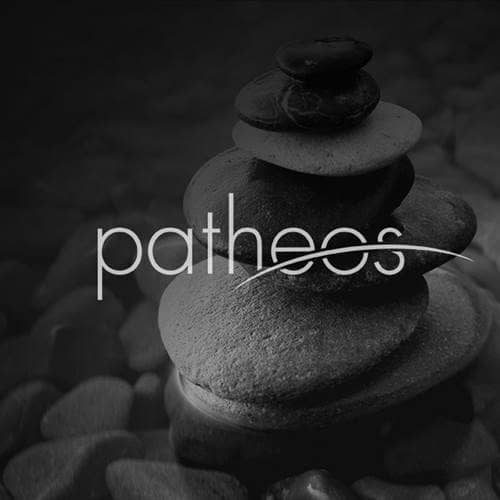- Trending:
- Forgiveness
- |
- Resurrection
- |
- Joy
- |
- Feminism
- |
- Afterlife

RELIGION LIBRARY
Presbyterian and Reformed
Rites and Ceremonies
The two most important rites in Reformed churches are the two sacraments: baptism and the Lord's Supper. The most contentious theological issues in Protestantism have centered on these sacraments, which have divided not only Protestants from Catholics, but Lutherans from Reformed.
A sacrament is an action in which God's grace is especially present. Roman Catholics have seven: baptism, confirmation, confession, Lord's Supper, marriage, ordination, and the anointing of the sick (formerly known as last rites). Luther cut this list down to the two sacraments of baptism and the Lord's Supper. He believed that, to be a sacrament, a ritual had to be explicitly instituted for the Church by Jesus in the Gospels. Jesus does tell his disciples to go and baptize in the name of the Father, the Son, and the Holy Spirit (Matthew 28:19), and at the Last Supper as he breaks bread he tells them to "do this in remembrance of me" (Luke 22:19). Other rituals, while important, do not meet these criteria. They are rites but not sacraments. Rites that are for specific occasions such as marriage or ordination take place during "occasional services." Reformed Churches followed Luther's lead on this.
Reformed and Lutheran Christians continued the practice of infant baptism, though they disagreed with the Catholics that baptism was strictly necessary for salvation (so, they discouraged emergency baptisms of sick infants). For Luther, infant baptism was a sign that salvation was a gift from God, not an act of human understanding. Calvin in addition argued that there was only one covenant between God and humans. Baptism was the precise functional equivalent of circumcision among the Jews, and so Christians ought to baptize at about eight days of age as the Jews did. For Zwingli, who did not share Luther's theology of two kingdoms but expected civic leaders also to be Christian leaders, baptism also functioned as a rite of initiation into the civic community, and thus was necessary for citizenship in Zurich.
The basic symbolism of baptism is that water washes away original sin. Reformed Christians do not believe that the sin itself is actually removed, but that the penalty for sin is removed. In other words, in baptism Christians are not made perfect, but they are forgiven. Many churches baptize by sprinkling or pouring water on the head of the person being baptized. Some Reformed churches (they tend to be more conservative ones, but need not be) practice full immersion. In full immersion the person being baptized, either outdoors in a river or more commonly in a special tank near the sanctuary, is completely submerged and then pulled out of the water by the minister. Some believe full immersion to be more biblical-it comes closer to the way baptism was practiced as described in the New Testament, for example when John the Baptist baptized Jesus in the Jordan River. This practice, in addition to the symbolism of washing away the stain of sin, also symbolizes dying, being buried, and being resurrected to a new life in Christ.
One of the most distinctive Reformed rituals is the Lord's Supper. The Catholic Church had taught that the Lord's Supper (also called the Eucharist) was a re-enactment of Christ's sacrifice. Furthermore, Catholics used the idea of transubstantiation to discuss the miracle that the bread and wine become the body and blood of Christ when blessed by a priest. The essence (or substance) of the bread leaves, and though the characteristics remain (taste, color, texture, etc.) it is replaced by the essence of Christ. The bread and wine literally are Jesus. This is the doctrine of "real presence."
Luther agreed that Jesus was physically present in the elements, but he rejected the language of substances because it was not biblical. Though it was impossible fully to understand, Jesus did not lie when he said "This is my body" as he held up the bread. For Luther, the bread is still bread but it is also Jesus (he coined the term Fleischbrot or "fleshbread" to describe it). Jesus was "in, with, and under" the bread and wine. For Luther, Christ's sacrifice was already accomplished and did not need to be re-enacted. The Lord's Supper was not an offering performed by priests for God, but a physical embodiment of the promises of forgiveness given by God to humans.
This was the issue on which Zwingli and Luther could not reach agreement at the Colloquy of Marburg in 1529. Zwingli, whom many people consider the first great theoretician of signs in the west, taught that when Jesus held up the bread and said "This is my body" he was using a figure of speech. For Zwingli, those gathered at the table are present because they are already members of the body of Christ (through baptism). Celebrating the Lord's Supper is a commemoration of a past event (Christ's saving sacrifice on the cross), and a public declaration of membership in the community founded by Jesus. If one can speak of a divine presence, it is the presence of the Spirit that forms the Christian community. There is a sharp distinction for Zwingli between the sign and the thing signified. The sacrament does not impart grace-that is done directly by the Holy Spirit. It is an indication by believers that they have received already grace. Zwingli found the idea of literally eating Jesus' body disgusting.
For Luther, Zwingli's theology of the Lord's Supper has several problems. He complains that for Zwingli the bread of the sacrament is no different than the bread of the marketplace. God deals with us instrumentally, through signs, for Luther. If one claims that Jesus' simple statement "This is my body" is merely symbolic, does not mean exactly what it says, then one calls into question the reliability of scripture, which for Luther is the bedrock of faith.
Calvin attempts to walk a middle path between these two positions. But if he had to choose, Calvin would side with Luther. Calvin agrees with Luther that the Lord's Supper is actually efficacious; it does not merely symbolize something that has already happened. He asks, "Why would the Lord put the symbol of his body in your hands unless to assure you of true participation in it?" But Calvin cannot read the passage "This is my body" literally, either. At stake for Calvin is the location of Christ and the way Christ is present after Jesus' crucifixion and resurrection. If Jesus' physical, resurrected body "sits on the right hand of God the father almighty," then it cannot be in the bread. Jesus was bodily present on earth for his thirty-odd years in the flesh, but now Jesus is in heaven. Calvin accused Luther of wanting to yank Jesus' body down from heaven and parcel it out bit by bit. For Calvin there is a real presence of Jesus in the elements, but it is a spiritual presence. Lutherans, in turn, think that Calvin wanted Christ to bi-locate, to be in heaven and in the elements at once. They mocked this doctrine with the phrase "extra Calvinisticum." Most Reformed Christians today tend to agree with Calvin's theology of the Lord's Supper-the bread is more than just symbolic, but perhaps not literally the body of Jesus.
Study Questions:
1. What are sacraments? How do they differ between the Roman Catholic Church and the Protestant Church? From the Lutheran Church to the Reformed Church?
2. Where did Zwingli and Luther agree on baptism? Where did they disagree?
3. Why is baptism an act of symbolism? Describe how it is performed.
4. What is transubstantiation? How do Zwingli and Luther understand it differently?
5. How does the Resurrection complicate Calvin’s understanding of communion?










